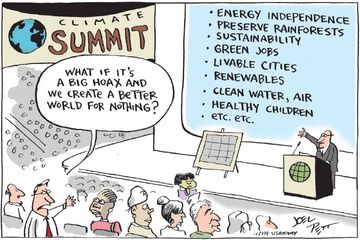It’s no secret that wealthy individuals are more likely to be responsible for emitting greenhouse gases into the atmosphere causing climate change. Studies estimate that the poorest 50% of the global population are responsible for only 10% of global emissions, yet profusely live in the most vulnerable countries to climate change.
These studies place the burden of responsibility on “the rich”, by pointing out that the average footprint of the richest 1% of people across the globe could be 175 times that of the poorest 10%.
People often justify not taking responsibility themselves by claiming their actions will have no effect and “the rich” are to blame. However in this article we will dig into just what it takes to qualify as “the rich” and show that you are, most likely, part of this category.
So who exactly are the “Richest 1%”?
According to a report compiled by Oxfam1 and the Stockholm Environment Institute, the richest 10% of the global population, comprising about 630 million people, were responsible for about 52% of global emissions over 25 years.
Globally, the richest 10% are those with incomes above $35,000 (£27,000) a year, and the richest 1% are people earning more than $100,000.
When you read headlines that blame “the rich”, it is quick to assume that these are the private-jet loving super-rich, but on the contrary, it’s not. You and I are pieces of this puzzle and likely fall into the “richest 10%” category. Simple things like day-to-day consumerism and using electricity & heating make you part of the problem, and it is safe to say that you are causing climate change!
If you consume goods and live within a system2 that enables and even rewards consumption, then you belong to the wealthiest 10% as well. We know it seems a little counterintuitive, but let’s explain how.
Across its life cycle3, an average product results in carbon emissions worth 6.3 times its weight. Therefore, as consumers of these products, their emissions trickle down into your account (consumption-based emissions).
Digging further into the emission patterns of the rich and the poor, some studies4 create a misleading impression that the everyday person does not have to be responsible for climate change and that responsibility should be placed on the elites' shoulders. This is misplaced and ill-advised.
How do Consumer Habits Impact Climate Change?
Our consumer habits are a key driver in carbon emissions. A study5 found that the production and use of household goods were responsible for about 60 percent of global GHG emissions. The wealthier the people become, the more energy they use.
An American’s typical yearly carbon emissions are about five times that of the world’s average person. In 2009, US consumers with more than $100,0006 in annual household income comprised 22.3 percent of the population yet generated almost one-third of all US households' total carbon emissions.
As more people globally enter the middle class and become affluent, the problem escalates. After the basic needs are met, consumers embark on buying items for social status; frequently purchasing unnecessary and/or low quality items that are wastefully discarded.. Producing all these goods is emission-intensive, hence more pollution in the atmosphere.
Technology can lay out energy efficiency measures that help combat climate change, but consumption growth has outweighed any beneficial effects of changes in technology in the past few decades. Therefore it is simply not enough to just buy green goods, but also essential to reduce consumption because 45 percent7 of global greenhouse gas emissions solely come from the production of the goods we utilize every day.
For many today, leisure time is shopping time! It provides pleasure — getting a thrill from a bargain or newness or escaping one’s problems. However this endorphine hit is merely fleeting, linked to the act of buying rather than the product itself.
Fortunately, COVID-19, with its enforced restrictions on the usual activities, has shown many people that it’s possible to live simpler, happier, and less materialistic lives. According to a survey by Vox8, the top-ranking change that people would like to maintain after the pandemic is to reduce their consumerism, consequently becoming more conscientious.
Individuals sometimes feel that their efforts are too insignificant to make a dent in climate change. Still, these individual actions have the potential to become social trends that make a difference.
On the Final Note
It is the easy way out to place blame on corporations, governments or the rich, however you are most likely part of the problem. Choosing to shun your individual responsibility diminishes climate action.
The real solutions to climate change have been eclipsed by individual misinformation or misinterpretation. Getting the facts right before incriminating others is important - did you know that the richest 10%1 are people earning more than about $35,000? We should desist from the notion that the super-rich in society are exclusively in charge of solving the climate crisis .
Dismissing the gravity of individual responsibility in reducing climate change has become the new conventional wisdom among some commentators and environmental advocates. You may feel that your action is limited, however you can make a difference: vote for politicians that support a sustainable future; reduce your consumerist behaviour, preferring sustainable options; remove your remaining carbon footprint until you can truly be net-zero.
The most important thing is to act.
Don’t let anyone tell you differently.
- Carbon emissions of richest 1 percent more than double the emissions of the poorest half of humanity ↩︎
- Climate change - Who is to blame and why does it matter? ↩︎
- Carbon emissions embodied in product value chains and the role of Life Cycle Assessment in curbing them ↩︎
- World’s wealthiest ‘at heart of climate problem’ ↩︎
- Environmental Impact Assessment of Household Consumption ↩︎
- 5 charts show how your household drives up global greenhouse gas emissions ↩︎
- Completing the picture - how the circular economy tackles climate change ↩︎
- Quarantine has changed us — and it’s not all bad ↩︎



